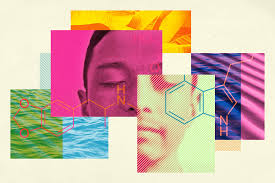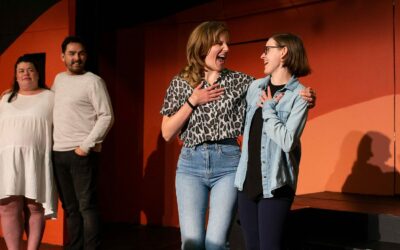Podcast: Play in new window | Download (Duration: 1:01:18 — 42.1MB)
Subscribe: Apple Podcasts | Spotify | Amazon Music
What if we flipped the script and learned to see our body as a messenger that needs to be heard rather than an obstacle to be conquered when it comes to our relationship with food? When we take physiological perspective, we learn that the body has much to say not only about food but also emotional regulation and our basic human needs for attachment and defense.
Using the sensory information, attachment system and working with defenses.
Who are our guests on this episode, you ask? Well here ya go, they are pretty bad-ass and they were interviewed by Dr. Ann Kelley:
Paula Scatoloni, LCSW, CEDS, SEP
Paula is a somatic-based psychotherapist, Certified Eating Disorders Specialist, and Somatic Experiencing™ practitioner in Chapel Hill, NC. She has worked in the field of eating disorders for over two decades. Paula served as the Eating Disorder Coordinator at Duke University CAPS for nine years and has taught extensively on the etiology and treatment of eating disorders through workshops, professional trainings, and conferences. She co-developed the first intensive outpatient program for eating disorders in the U.S with Dr. Anita Johnston. She is the co-founder of the Embodied Recovery model and the Embodied Recovery Institute in Durham, NC.
Rachel Lewis-Marlow, MS, EdS, LPC, LMBT
Rachel is a somatically integrative psychotherapist, dually licensed in counseling and therapeutic massage and bodywork. She is a Certified Advanced Practitioner in Sensorimotor Psychotherapy and has advanced training and 25+ years of experience in diverse somatic therapies including Craniosacral Therapy, Energetic Osteopathy, Oncology massage and Aromatherapy. Rachel She is the co-founder of the Embodied Recovery model and the Embodied Recovery Institute in Durham, NC. provides ongoing training and supervision to clinical and support staff in the programmatic implementation of the Embodied Recovery model. In her private practice in Chapel Hill, NC, Rachel works with trauma, eating disorders, and dissociative disorders.
TU99 Shownotes (are these not awesome or what? Patrons help us be able to do this, thank you you know who you are.)
Typical Treatment Model
Bio-Psychosocial model
- Bio: has been usage of pharmacology, re-feeding, nutritional rehabilitation, and yoga
- Psycho part has been education about emotion and emotional tolerance, dialectical behavioral therapy, supportive therapies to support emotional processing and cognitive distortions, cognitive behavioral treatment to address the distortions, and then try to change the behaviors by changing the cognitions,
- Social part: family and dynamics around having a place of belonging and one’s sense of belonging in the world, the culture, & the family
- Usually a treatment team: dietician, a therapist, family therapist, a psychiatrist, a physician
Typical View of Recovery
- Goal: to get somebody to eat a prescribed amount of nutritional food in order to achieve a range of BMI or body size or shape
- eat it in what we call a normative style, which is a very relative term
- Focus is on how behaviors are a response to an attitude towards the body itself
What’s Missing?
- Being curious about what the body is saying and expressing through the eating disorder behaviors
Shifting the Perspective: The Embodied Recovery Model
The Embodied Recovery Model is Somato–Psycho-Social. It expands the role of the body to include anatomy, physiology, kinesiology, movement, and posture.
The 5 Core Principles of the Embodied Recovery Model
The 5 Core Principles facilitate the intersection between somatic organization, subjective experience of self, and basic human needs for attachment and defense.
Shifting from bio-psycho-social model to somato-psycho-social model.
Directly resourcing the body so that it becomes a resource in recovery rather than an obstacle to recovery.
Collaborate with the body at the physiological level to support the infrastructures that govern emotional regulation, memory, and sustained healing.
Shifting the focus from what people with eating disorders are saying about their bodies to what their bodies are saying about what it means to be alive (defense structures) and what they need to thrive (attachment system).
- subjective experience meaning it’s not so much what people think about themselves but it’s actually the experience of the body and through the body
Redefining recovery as an experience of embodiment rather than the absence or reduction of eating disorder symptoms.
- the idea that when we’re actually working with our body, and we know how to dialogue with it then, it’s going to support us and our relationship with food.
Somatic Scaffolding
- Distorted body image:
- what’s happening is that the visual image of the body through the eyes and the interoceptive message (signals from the body inside) don’t match up.
- the visual information that they’re getting is impacted by the internal sensations they’re having and thoughts attempt to make sense of that
- really loud internal signals translate to interoceptively feeling huge because the internal noise is huge
- Embodiment: an intersection of our own awareness and our physical container-where our consciousness and our physical body intersect
- Eating disorder behaviors are a window into places where we are not a fully embodied
- 3 main areas examined in Somatic Scaffolding: the information (Sensory System), what’s being processed (Attachment System), and how it’s being processed (Defense System).
Sensory Integration System
- Not working optimally due to genetics or trauma (generational, gestational, birth, childhood, etc).
- Sensitivity:
- Someone who is highly sensitive to textures, smells, sound, etc. experiences an internal experience of threat, which impacts the ventral vagal system
- Vagal system gets overloaded and overwhelmed and starts to shut down. Then we go into sympathetic or dorsal states, which do not give support for effective ingestion, digestion, and elimination.
- Have to pay attention to what helps resource sensory system
(Learn more about this in TU93 and TU94 on Polyvagal Theory)
Attachment System
- the relational dynamics that build the capacity for attachment (See TU 59, 60, & 61 for more info on different attachment styles)
- is illustrated in our basic developmental movement patterns of yield, push, reach, grasp, and pull that exist not just involuntary movement but in the primitive reflexes cellular movements
- the expansion and contraction movements build the capacity to connect in attachment and disconnect in our acts of defense
- Learning to yield
- yield – the perfect, relaxed state where you’re fully who you are in relationship with something else
Being able to embody that phase of action, that rest, is an important action. It’s not the absence of something it is the presence of something, right. And when we can do that that is an essential part of the cycle of ingestion and digestion. It helps us know enough I’m done. I can just finish…it supports this capacity of I’m enough there’s enough I’ve had enough.
Defensive defensive system – the impact of trauma
- trauma – something that is fundamentally impactful to us on a foundational level
- Is the impact truncating our attachment system that brings us into connection, or is it truncating our ability to defend ourselves and separate?
- Is a defense system intact or was there something that has been incomplete and is still trying to resolve
- we don’t want to try to get someone to engage in an attachment action when the reason that their body is deregulated is because it hasn’t been able to complete a defensive action.
Window of tolerance
- A robust window of tolerance enables us to identify things like:
- when we’re hungry & when we’re full
- regulate body temperature
- regulator physiological & emotional state
- reach out to others when in distress
- move from sympathetic arousal to parasympathetic with ease and flow
- Smaller window of tolerance
- caused by something that happened with the primitive reflexes
- trauma physiology running the system because of birth trauma or attachment deficits
- we live outside this window most of the time and develop self-protective strategies
“[These strategies] can look like anything we do in order to feel more regulated. And with eating disorders, what’s happened is that those behaviors are the only choice they have in order to come back in the window.” -Paula Scataloni, Co-founder of The Embodied Recovery Institute“
Effective treatment
- looks at how the attachment dynamic manifests in all the different layers of organization, and how does each member of the treatment team address it.
- training the nervous system to do what it didn’t get to do in the first three years of life (Learn more about Neuroplasticity in TU40 and Neurofluency in TU89)
- Ensuring that the individual’s body has the physiological and neurobiological capacity to handle the treatment strategies first
- Encompasses all elements of somatic scaffolding
- Brings in and examines the attachment, defensive, regulatory, and co-regulatory capacities of the entire family system
“If we just treat and help the client develop regulatory capacity but the family system is not supported, then we’re just helping them in the office and then sending them out into a system that has struggles.” – Paula Scataloni, Co-founder of the Embodied Recovery Institute
Resources:
Embodied Recovery Institute Website
Understanding The Connection Between, Eating, Attachment, And Trauma By Paula Scatoloni, LCSW, CEDS, SEP
Trauma-Informed Approaches to Eating Disorders
Bonnie Bainbridge Cohen’s website
This is the heart of Therapist Uncensored – the reason we started this podcast. We are so honored to be able to bring this kind of excellent content to you guys and to help you understand yourself and the ones you love.
Like this one? You may be interested in this one, too.
If you appreciate this work you can help it continue by becoming a Patron – ie. a super fan, or what we call Neuronerds. We are approaching our 100th episode (can you believe it!!!) and we are having special offers up until our 100th episode! Click here to sign up for as little as $5 a month.
You can also help us by subscribing on Apple Podcast, Google Podcast, Spotify or Podbean to name a few and by leaving a review so others can discover this cool science. Remember, sharing is caring!













